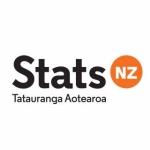Serious injury outcome indicator reports for 1994–2010
The three serious injury outcome indicator reports for 1994–2010 present annual frequencies and rates for serious injury outcomes in New Zealand, through a set of indicators for fatal and non-fatal injuries. The reports use national administrative datasets to provide the most robust and reliable measures of serious injury outcomes currently available for New Zealand.
The three reports present trends for the whole population, for Māori, and for children (0–14 years).
- Serious injury outcome indicators: 1994–2010
- Serious injury outcome indicators for Māori: 1996–2010
- Serious injury outcome indicators for children: 1994–2010.
More detail about how the indicators were derived can be found in the technical report.
The serious injury outcome indicators are the key tool for measuring the progress and impact of the New Zealand Injury Prevention Strategy (NZIPS). The NZIPS identified six priority areas for national injury prevention. Indicators to measure the incidence and rates of injury were developed for each of the priority areas as a way to monitor performance in reducing injury. Indicators were also developed for ‘all injury’ as an overall measure.
Lead agencies for the six NZIPS priority areas signed the Protocol for Government Agency Reporting on Injury Incidence in New Zealand in April 2010. This protocol ensures that the agencies use the serious injury outcome indicators to adopt consistent, high level injury measures when reporting on injury trends.
The indicators were developed by the Injury Prevention Research Unit (IPRU) at the University of Otago. Between 2006 and 2010 the IPRU published the serious injury outcome indicators as the Chartbooks of the New Zealand Injury Prevention Strategy Serious Injury Outcome Indicators. As Injury Information Manager, Statistics New Zealand will produce the annual publications from 2011.
